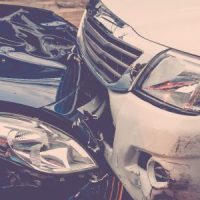Obstacles to Maximum Compensation in Car Crash Cases

Casinos don’t pay for lavish buildings by paying winners, and insurance companies don’t earn $1 trillion a year by compensating crash victims. Whether you walk up to a blackjack table or file an accident claim, the deck is stacked against you. The main difference is that, in most cases, blackjack losses are not life altering. Car crash injuries, on the other hand, are normally life-altering or life threatening.
A Sugar Land car accident lawyer knows how to play the game. The average attorney-negotiated settlement is almost four times higher than the average non-attorney-negotiated settlement. A partnership with a lawyer doesn’t guarantee compensation for economic losses, such as medical bills, and noneconomic losses, such as pain and suffering. But this relationship always evens the odds.
Assumption of the Risk
This defense is a limited form of comparative fault, which is discussed below. In Texas and most other jurisdictions, in car crash claims, assumption of the risk is better known as the seat belt defense.
Until recently, insurance companies couldn’t introduce evidence of seat belt non-use and reduce the victim’s compensation. But the Texas Supreme Court reversed course in 2015. Now, such evidence is admissible, if it meets both assumption of the risk prongs, which are:
- Voluntary Assumption: The insurance company must prove, by a preponderance of the evidence, that the victim voluntarily wasn’t properly restrained. Victims cannot buckle up if the seat belt wasn’t working properly, due to a product defect or years of wear and tear.
- Known Risk: Next, the insurance company must prove, once again by a preponderance of the evidence, that the failure to wear a seat belt, as opposed to the tortfeasor’s (negligent driver’s) negligence, substantially caused the victim’s injuries. Generic safety statistics don’t establish this point. The insurance company must present hard, medical evidence.
If insurance company lawyers prove both elements, the jury may divide responsibility on a percentage basis, as outlined below.
Comparative Fault
Contributory negligence is a broader form of assumption of the risk. For example, this defense could apply if the tortfeasor was speeding and the victim was alcohol impaired. Once again, comparative fault is a two-part defense.
First, lawyers must prove the victim was negligent. Eyewitnesses are often incorrect or biased. The police report could be one-sided as well, especially if the victim died and the reporting officer only heard one side of the story.
Next, lawyers must prove the victim’s negligence substantially contributed to the wreck. Let’s go back to the alcohol example. Technically, people who have a sip of wine at religious ceremonies are alcohol impaired. But most jurors don’t see it that way.
If the insurance company proves points one and two, the jury must divide responsibility based on the evidence. Texas is a modified comparative fault state with a 51 percent bar. Tortfeasors are liable for a proportionate share of damages if victims are no more than 49 percent responsible for wrecks.
Work With a Thorough Fort Bend County Lawyer
Injury victims are entitled to significant compensation. For a free consultation with an experienced personal injury lawyer in Missouri City, contact the Henrietta Ezeoke Law Firm. Virtual, home, and hospital visits are available.
Source:
iii.org/fact-statistic/facts-statistics-industry-overview
